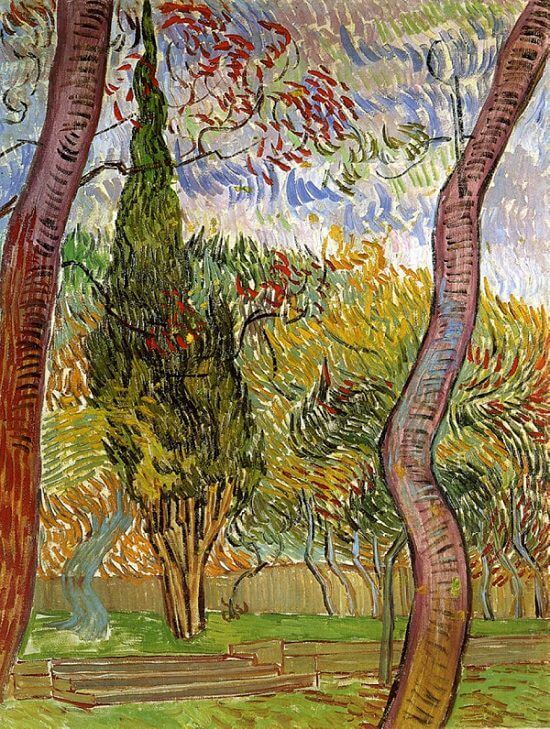The Saint Paul Hospital, 1889 by Vincent van Gogh

Angular and twisted, tree trunks cross the visual field and add a note of uneasiness to the serenity of the Provencal landscapes saturated with sunshine. Modern cinema was also to use the disturbing rhetoric of the close-up view when, for example, the camera panoramically films obstacles which block the eye to reveal all at once the open space in which a drama is coming to a climax.
By introducing vertical elements in the foreground, the artist brings his composition to the fore. The painted space - the trees - is identified with the real space, namely, the flat canvas surface. This formula was to be used by Vlaminck, Dufy, Georges Braque, Pablo Picasso, and others. Piet Mondrian, progressing by a series of steps, was to make the tree one of the chief subjects of his transitional period between representational and abstract art. Cezanne's and Van Gogh's trunks offer a foretaste of the black lines used by the father of De Stijl to stabilize his geometrical constructions. But Cezanne also created an ambiguous space with his trees, thanks to the branches which blend with the foliage in the background. For him this offered a means of blurring perspective. Van Gogh's perspective, however, is more solid.




















